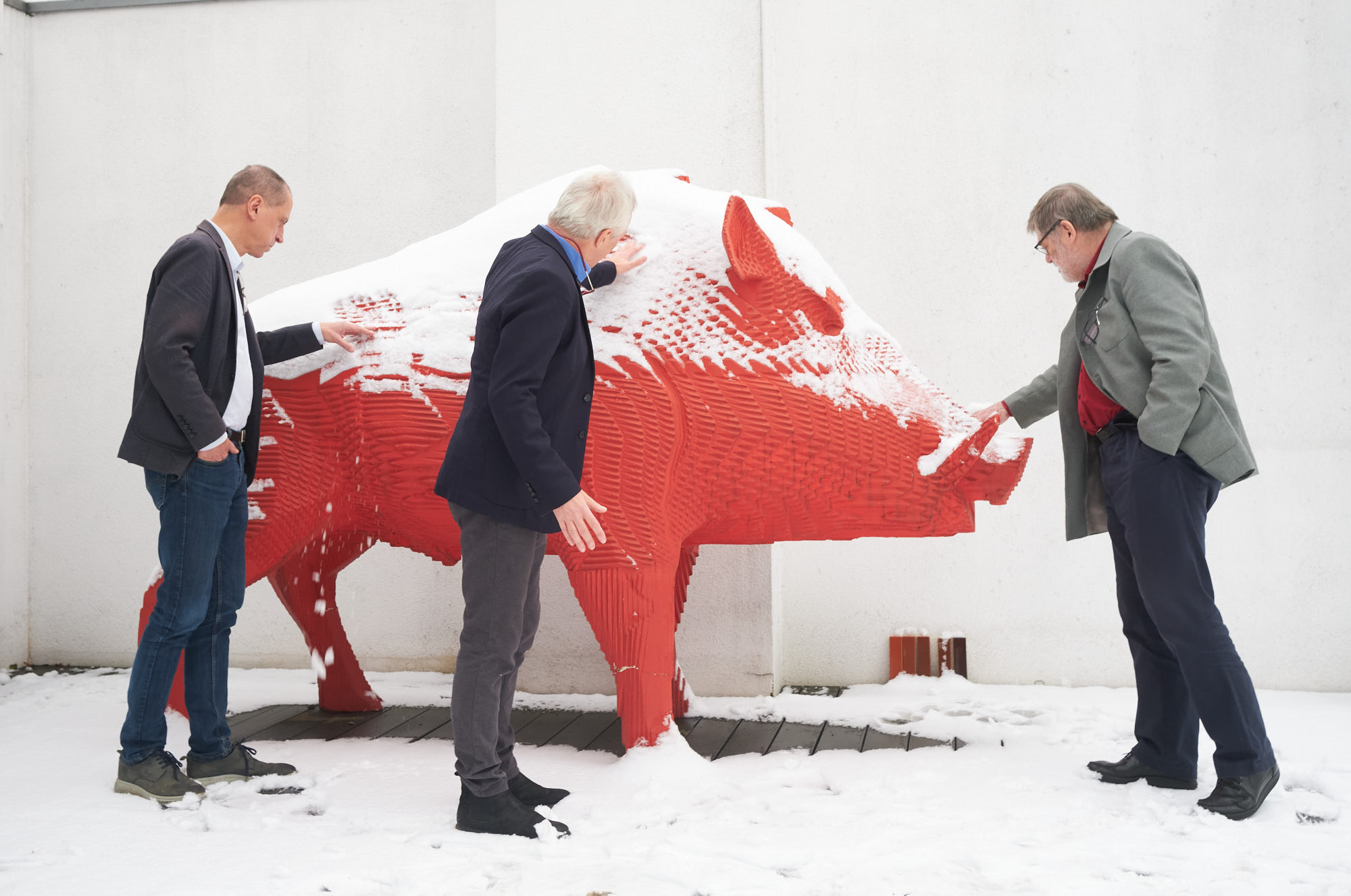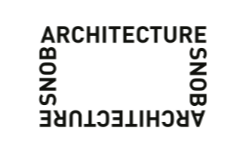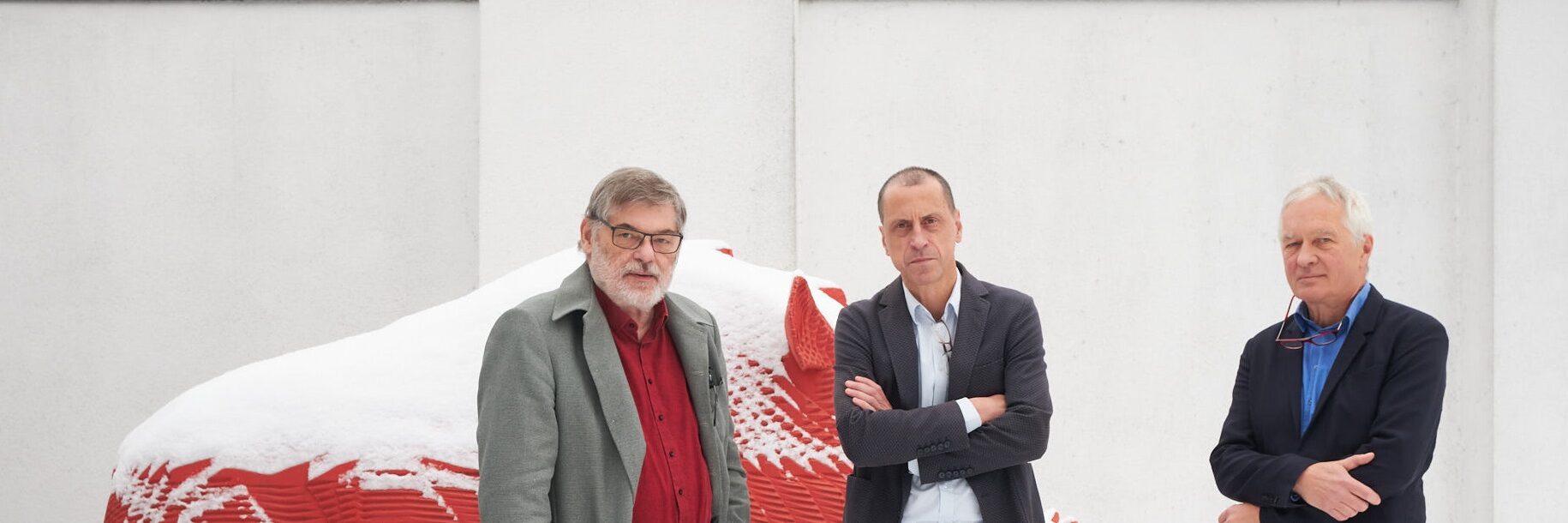‘What we do is incompatible with the essence of living processes, the functioning of the world in general. The relationships of countless organisms, the flows and dissipations of energy. The contemporary mainstream of construction is about the opposite: about separating oneself from the world with an increasingly thick layer of insulation’, says Maciej Miłobędzki from the JEMS Architekci studio. We talked with him, Jerzy Szczepanik-Dzikowski and Marcin Sadowski about how architecture changed and continues to change over the years.

Fot. Rafał Kłos
Marcin Szczelina: While listing the most influential Polish studios within our national community, yours often lands in the top 3 of the ‘statistics’. How has architecture and design changed over the many years that you have been active?
JERZY SZCZEPANIK-DZIKOWSKI: Not so much architecture and design have changed as the matter of designing. During the life of our office, we are increasingly forced to deal with the commercial side of it. This does not mean that what is the idea, what is the most important, recedes into the background, but the center of gravity is shifting, and this has numerous implications. On the other hand, a strong trend regarding environmental protection is beginning to dominate too.
MACIEJ MIŁOBĘDZKI: I would say that this follows the commercial trend. Mainstream has nothing to do with ecology whatsoever. It’s like an electric car – it may seem environmentally friendly, but in fact it only transfers important issues to other areas. It’s the same with architecture. The buildings that are extremely unecological get certified with various tags. Investors like them – they are easy to get and create “content” for the marketing side of investment.
MARCIN SADOWSKI: A lot has changed since the 1990s, a lot for the better. At the beginning, when we started to build the first commercial investments, we took responsibility for all documentation. For many years, through intensive practice and gathering experience, we have created our own standards for collecting and cataloging documentation.
JSD: The technology of running an office and providing customer service is much more difficult today and is associated with greater responsibility. The architectural quality of what you want to build is confronted with what is being built in the commercial reality. It is more noticeable than in the 1990s, when technological means were modest but sufficient to create. Today, building technology and design technology do not necessarily become quality tools. Norms and standards take up more and more space and they are becoming, above all, the criteria followed by both the client and the office. Today, it is often through their prism that the project is assessed – not the architectural quality – and so we encounter greater difficulties than in the past.
MS: In the 1990s, each new building was part of the process of “building the country”, the development of the economy. The issues of taking responsibility for the city remained in the background. Then the saturated market became more competitive. Around 2007–2008, something changed for the better. The quality of architecture began to be perceived as a parameter of the quality of our lives. Much more attention was dedicated to spatial solutions and the technical standard of buildings. Today it seems to be much more difficult to achieve. There has been a regression again, we have many market, regulatory, unfavorable conditions. However, social interest in architecture, public space and the city is constantly growing and this is a very positive phenomenon. For example, in the case of the Five Corners Square in Warsaw, many polemical opinions appeared.
MM: Debates, however, take place around the implementation, not the project itself or the idea. We are talking about a technological leap, and it was not followed by a deeper reflection, intellectual and creative effort of our professional environment. This is pointed out by people from the outside who come to absorb what is happening on the Polish architectural scene – we carry out projects efficiently, in good taste, but often there is no deeper thought, awareness of goals, dreams embedded in them.
We used to talk about an architect as an ever-knowing demiurge. Today, he is a mediator between various people – an investor, a city, other groups of interest. How do you see the change of the profession?
JSD: The demiurge architect could function in the world of personal responsibility, and today it is about diluting it. Everything is negotiable. This process does not serve architecture, understood as an elementary order. We are rich in 30 years of persistent struggle for what is called ‘spatial order’. Apparently, we have tools for managing this – local plans, people whose job is to keep checking, but not an architect, a demiurge and an official, who has the right to accept or not, instead of the obligation to check. When we look around, the growing chaos is an undeniable phenomenon, not only in Polish cities. This does not change the fact that fantastic projects are created from time to time, but usually it happens where there is the strongest possible background – cultural or material, and preferably both. Anyway, the order in building cities and towns does not come from the creation of works. This requires stability, consistency, rationality. Regulations do not ensure rationality. Rationality requires the right to make decisions and to take responsibility. We operate in a world of fragmentation, division, diminishing responsibility. Our profession is associated with less and less ability to decide.
MM: This is a process involving all parties wrapped in investing in construction.
JSD: As in Fromm’s book ‘Escape from Freedom’, it’s convenient to avoid responsibility. It’s inconvenient to be responsible and free.
MM: It is also an escape towards technology, which is a goal in itself and is creating more and more ties, strings attached. This causes complications in all areas – building, agreeing on projects. The only chance for modern architecture is a radical defragmentation of overly complicated techniques and procedures. This activity in Poland is currently a form of standardized clerical work, it often lacks added value.
JSD: The control and regulation system is based on distrust. Who is not worthy of trust must be controlled, must not be responsible. And in order to create added value, you need to have the trust of both sides of the equation: the client and the community, since our profession is said to be a profession of public trust.
MM: This trust is not one-sided – in the case of Agora’s headquarters, we have done a lot to read the intention, which has been clearly articulated. We read it and translated it into the language of architecture, thanks to which we have become trustworthy.
Let’s stay on the topic of being accountable. We talk a lot these days about the need for more sustainable design. Why is it still so difficult to obtain?
MS: The problem is our lifestyle, which is not compatible with ecological construction. Heated houses for cars – garages, near houses for people, +23 degrees inside, upon -20 degrees outside. We create standards and measurement tools that codify reality by imposing solutions without the right to choose.
MM: What we do is incompatible with the essence of living processes, the functioning of the world in general. The relationships of countless organisms, the flows and dissipations of energy. The contemporary mainstream of green building is about the opposite – separating ourselves from the world with an increasingly thicker layer of insulation. What regulates the relationship between the outside and the inside is the technical infrastructure that works for short-term savings. We transfer the problem to other places, into the future, for example we import non-durable devices from China by ships or planes.
JSD: You need to have a large financial base to conduct research towards genuinely ecological construction. It is difficult to get into such complexity while operating from the position of an office that exists because it has to sustain itself from month to month. Reality verifies us.
MS: If we use a priceless piece of land, materials and energy – then our actions must be the subject of great attention. Architecture is the greatest visually manifesting source-image of culture, and the way of rationally organizing space is in fact the ability to build an effective country. And here arrises the problem – projects that require knowledge, time and reflection should be more expensive. The ‘market’ does not accept such facts.
JSD: Today’s way of looking at investment and design is characterized by extensive division and box-inserting – someone does the construction, another one does the electrics, etc. And the overall feature of architecture, and thus also ecological construction, lies in complementarity: judging things not by technical standards, but by the relationships between them. If I decide to heat the house in a given way, then there is a whole set of solutions resulting in an extensive network of dependencies. We need to be able to imagine how the different systems in the building function and how they are interdependent. The issue of professional ethics is our ecological education and reaching the client. In our climate, there is no need to use the systems for two-thirds of the year. However, if they are implemented, they will work all year round – just like a refrigerator that we do not turn off.
What are your dreams around designing?
MM: I have a dream to build a building that will be really smart and will be defined and ‘defended’ on its own, not through technology.
JSD: I would like to build a house that grows out of the ground, is one with its surroundings, in the most literal sense it will grow into the forest or into the grass.
MM: It is also a dream to create a building that will be like a rock. Biological life will settle there – on the one hand, in a way envisioned by the architect, and on the other, unexpected, not requiring the artificial creation of living conditions. I also dream that the construction of residential buildings in Poznań will be successful. There are no layers of ‘soft’ isolation in the walls. They have the right mass to stabilize gentle energy flows in both directions.




